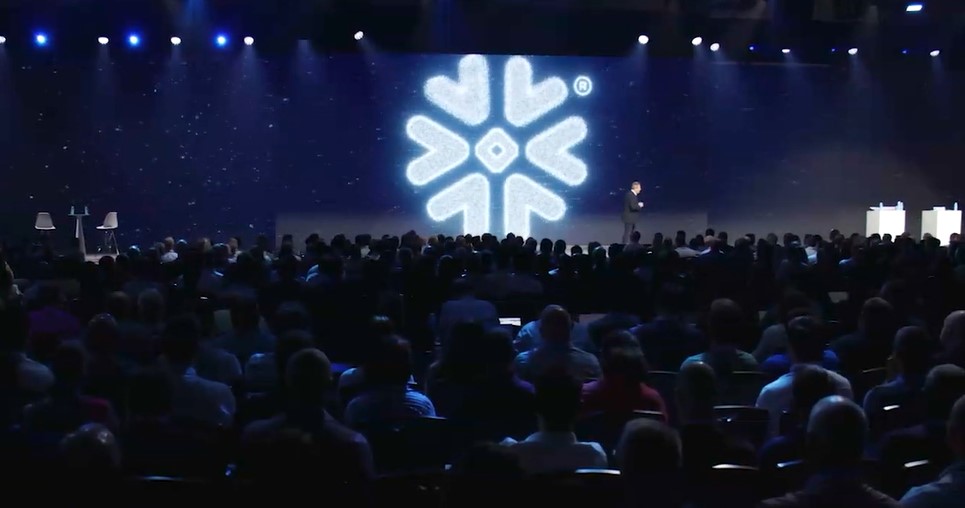Exploring micro-fulfillment centers with Samay Kohli, CEO and co-founder of GreyOrange.
Buying online has always been convenient for consumers. However, the onset of pandemic-induced lockdowns only heightened this further as shoppers’ priorities shifted towards ease, comfort and safety.
Two years on, the convenience and speed of eCommerce shopping has warped consumer expectations around what is logistically feasible for online shopping. Offering next-day or same-day delivery creates a substantial competitive advantage. Still, the costs associated with securing this capability are significant and require an extremely secure supply chain from end to end. Supply chain disruptions in the UK due to Brexit are compounded by global disruptions such as the great resignation and the pandemic. Securing a resilient supply chain is difficult, even for large enterprises that require diligent planning and forethought.
Retailers in the UK will generally have a select few large distribution centers (DCs) around the country. These DCs are also frequently used as storage warehouses, so retailers can store inventory and ship it out from the same location.
This presents two immediate problems for retailers. First, warehousing space in the UK is scarce and is rapidly increasing in price as demand outstrips supply. Second, this often means that when shipped, inventory will have to travel far across the country to reach its destination.
The first problem is a severe cost concern for retail enterprises, while the second is that the distance product has to travel to reach its destination is both a sustainability and efficiency concern.
For a glimpse of a better supply chain future, we need to look at the example of a Swedish household name, robotics, and the use of artificial intelligence.
How IKEA employed an innovative use of robotics to meet rapid fulfillment goals
For brands like IKEA, which owns a lot of their supply chain privately, technology that optimizes and reinforces their operations seems like a critical investment.
IKEA felt the strain of rapid delivery, particularly on its employees and the environment. The Swedish giant, therefore, sought a way to solve these challenges while continuing to deliver superior shopping experiences for customers by getting orders out quickly, accurately, affordably and sustainably.
To achieve this, IKEA needed AI and machine learning automation to optimize fulfillment and augment operations. The software we offered analyses incoming customer orders and orchestrates robots to bring inventory to IKEA co-workers who are picking orders.
One advantage of large retailers is the swaths of data they generate naturally, but there is too much to be processed by a human. The most efficient decisions can be made and executed automatically by applying intelligent AI across the supply chain, from manufacturing plants to fulfillment centers. IKEA’s use of an AI platform accelerates the next steps of their supply chain operations: micro-fulfillment centers (MFCs). As Forbes’ Chris Walton put it, “hyperlocal micro-fulfillment is the practice of retailers taking steps to either collocate fulfillment centers onsite at their stores or near their stores to take advantage of inventory already placed close to consumers’ homes.”
Orchestrating compatible systems from different suppliers
Across all retail sectors, one of the core customer demands is the ability to service both walk-in and online customers, and this requires maximizing the output of brick and mortar stores. Consumers increasingly want to order merchandise online and pick it up in their local store to save on shipping costs and avoid the risks associated with package delivery when they are not at home.
By combining warehouse management and order management software systems with robots – all potentially from different vendors – retail enterprises can pick and choose the most appropriate solutions for their precise needs.
This collaboration between vendors, referred to as ‘multi-robot orchestration’ by Gartner, is now an imperative client demand. The end goal of orchestration is to establish a unified workflow using different software and hardware solutions to achieve an outcome that one system couldn’t on its own.
One such collaboration is between robotics and Blue Yonder’s WMS and OMS software. Blue Yonder’s warehouse management system and OMS pass orders directly to our fulfillment platform which then orchestrates order fulfillment in the micro-fulfillment center, coordinating human and robotic teams and tasks with ease.
How smart AI and warehouse management systems work in conjunction to facilitate micro fulfillment centers
The premise of moving inventory closer to the final destination is simple, but there are overarching challenges for retail enterprises to solve in that endeavor. The most pressing issue is that although the retail landscape is more easily acquired – transforming already-owned stores or renting abandoned high-street spaces – the physical size of each MFC is limited.
The ultimate goal of employing an MFC strategy is to optimize a supply chain, but to optimize the limited physical space of an MFC requires advanced automated and data-driven solutions.
Advanced automated picking machines can store inventory in the MFC much more densely and safely than a human agent. Using automated picking and sorting robots allows MFCs to install storage racks that utilize the most vertical space they can. Automated picking solutions also reduce the reliance on available labor, reducing overall costs and making operations more resilient to labor shortages.
Using robotics-driven automation paired with high-density storage and fulfillment strategies enabled by AI-driven execution system software is the best practice for how to enable these capabilities.
Software that can identify product demand patterns in real-time and optimize the inventory storage strategy allows orders to be picked faster and at a lower cost per unit. These robotic picking solutions can be integrated with a supply chain management platform that analyzes real-time data to assess the best decision and execute it.
What are the barriers to integrating a micro-fulfillment strategy into a supply chain?
Defining and launching a micro-fulfillment strategy requires some significant analysis and planning. Products, locations, budget and return on investment must all be studied, rationalized, and justified. A specialized third-party consulting firm focusing on retail eCommerce fulfillment can help retailers model their inventory channel flow strategy and evaluate which products should be stocked in which markets.
They also will have the expertise to assist the retailer in identifying the right robotic automation solution that maximizes the MFC asset’s utilization, resulting in a profitable improved customer experience.
Historically, some retailers have maintained that their store back rooms are not sized to support micro fulfillment from a retail store location and don’t have standalone MFC capacity. With the extreme channel migration by consumers in just the past few years, it is time to think in a more disruptive manner. They are considering options like making the back room larger and the store smaller, leveraging the third party vacant space in any locality, and combining in-store pick-up with fulfillment in a dedicated site.
The size of an MFC also prohibits enterprises from stocking inventory long-term. Replenishing that inventory can be challenging and necessitates an effective, innovative AI platform to analyze changes in consumer demands in real-time to maintain the store’s efficiency.
Holistic supply chain transformation through AI and robotics
COVID-19 has accelerated the demand and shortened the time frame for disruptive innovation in the supply chain. Micro-fulfillment has transformed from a good idea into a mandate. Localized inventory assortment planning and management is a critical attribute of 2022 and beyond the supply chain.
The best retailers will not only recover from the days of the pandemic but will be in the position to meet the demands of holiday peak in 2023 and beyond because they have already adopted a strategy of advanced robotic automation in micro-fulfillment centers across the UK.
Visualizing our supply chain as a linear system from a product’s raw point of origin to the end consumer is not viable anymore. We must consider the supply chain as an interconnected mesh of nodes, each serving the wider objective of seamless consumer fulfillment.





